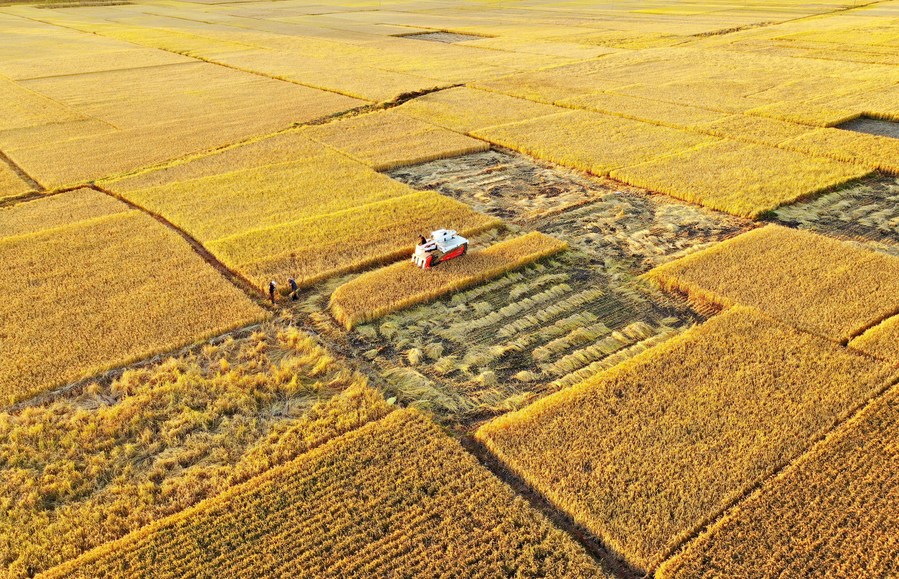China vows to further ensure grain security
Chinese authorities on Monday reaffirmed the country's focus on ensuring grain security and protecting germplasm resources after unveiling an annual rural policy plan to facilitate agricultural modernization and advance rural vitalization.
Chinese authorities on Monday reaffirmed the country's focus on ensuring grain security and protecting germplasm resources after unveiling an annual rural policy plan to facilitate agricultural modernization and advance rural vitalization.

Aerial photo taken on Oct. 18, 2020 shows harvesters operating in rice fields at Jiangzhuang Village of Luanzhou City in north China's Hebei Province. (Xinhua/Mu Yu)
"China's grain security is fully guaranteed," Minister of Agriculture and Rural Affairs Tang Renjian told a press conference, citing sufficient grain inventories and sound production and sales.
Acknowledging the country's agricultural achievements in withstanding a significant test last year amid the COVID-19 epidemic, Tang called for continuing to enhance grain output and ensure grain security.
The minister's remarks came after the release of China's "No. 1 central document" on Sunday. It lists the targets and tasks concerning agriculture and rural areas for 2021 and a broader vision until 2025.
As a rural blueprint unveiled annually, this year's document urged retaining a "red line" of 1.8 billion mu (120 million hectares) of arable land and preventing the use of arable land for non-farming purposes.
The country also planned to add 100 million mu of high-standard farmland with high and stable yields this year. It would be despite droughts and floods, according to the document.
China has made massive achievements in the agricultural sector in recent years. Official data showed China had 17 consecutive years of bumper harvests in grain production, with grain output exceeding 650 billion kg for six years in a row.
The mechanization rate of farming and harvesting reached 71 percent while the amount of chemical fertilizers and pesticides applied to crops dropped for four consecutive years, Tang said.
Yet, China's grain supply and demand remained in a "tight balance," Tang noted, calling for more efforts to enhance grain production to cope with external uncertainties and rising crop demand in the long run.
The country in the next stage should not only ensure quantity but also improve the diversity and quality of agricultural products, Tang said.
He urged promoting supply-side structural reform in the agricultural sector by improving breeding, branding, and standardized agricultural production to offer a broader range of high-quality products to Chinese consumers.
Admittedly, China still faces many weak links in germplasm resource protection, and breeding theories and technologies, according to Zhang Taolin, vice agricultural minister.
Zhang urged investigations and germplasm resource collection of crops, poultry, and aquatic products.
Efforts should also support leading enterprises specializing in germplasm and breeding, facilitate core-breeding technology breakthroughs, and promote agricultural biological breeding projects, Zhang said.

